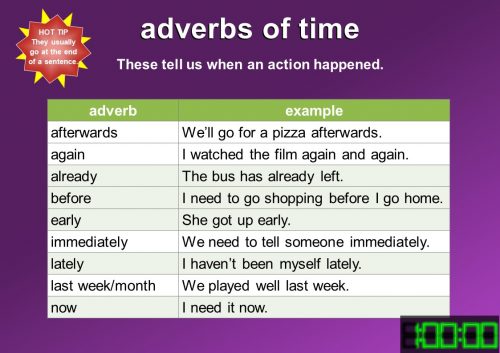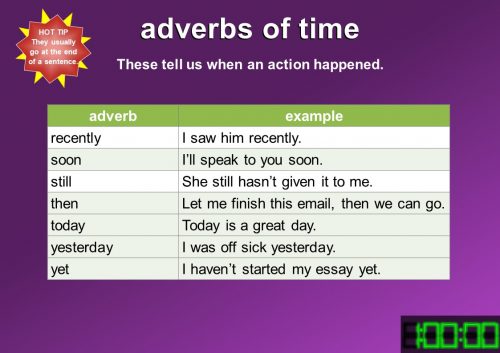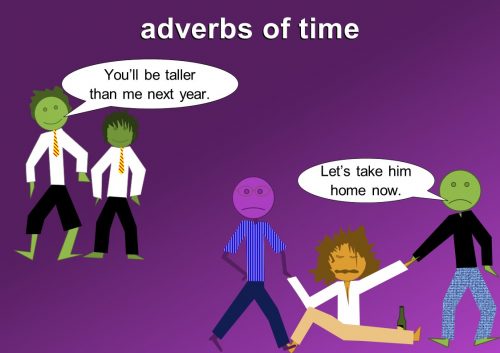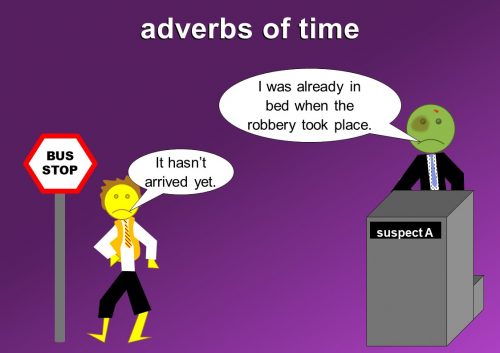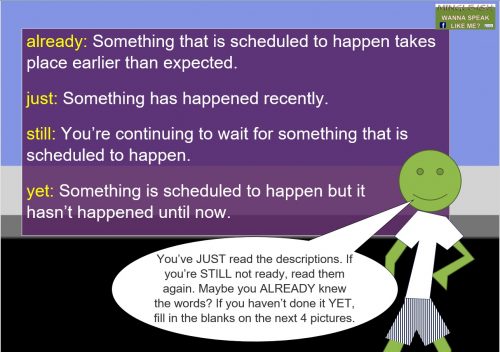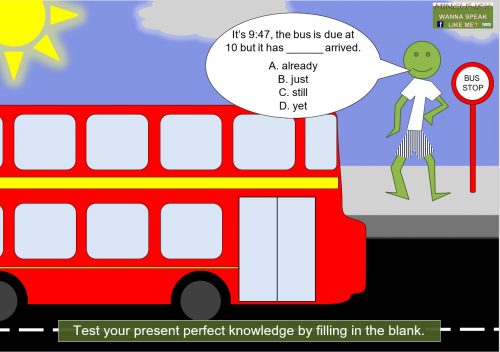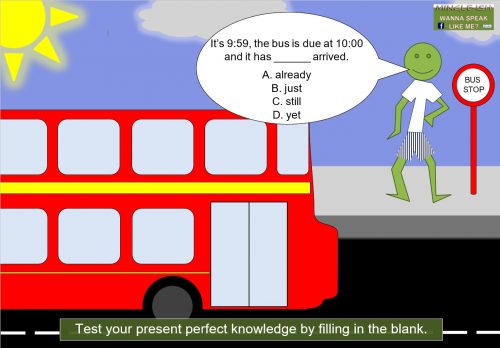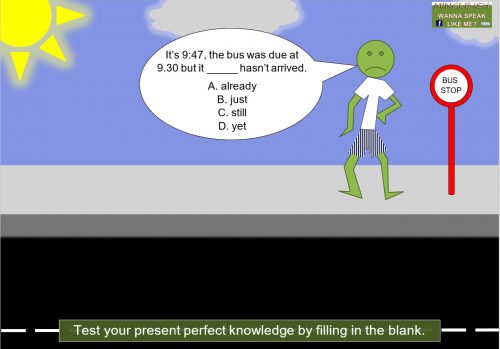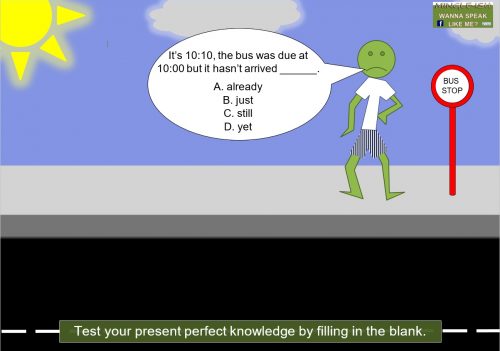Contents
An adverb of time tells us when an action happens. They are usually placed at the end of a sentence. For example: I played snooker yesterday.
It’s also possible to put adverb of time at the beginning of a sentence (to add emphasis to the timing). For example: Tomorrow you can stay up late.
You can also put the adverb of time in the middle (this is more formal). For example: Tom soon went to sleep.
Here are some of the most common adverbs of time we use.
adverbs of time in use
Let’s look at some illustrated examples of adverbs of time in real-life situations.
adverbs of time – how long
An adverb of time can also tell us how long something has been happening.
adverbs of time – already, just, still and yet
Already, just, still and yet are adverbs of time that are often confused and misused by English language learners. Read the slide below to gain an understanding of each one, then study the picture and answer the questions.
